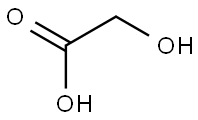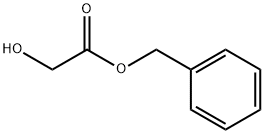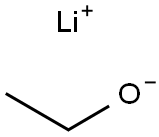Ethyl glycolate
- CAS NO.:623-50-7
- Empirical Formula: C4H8O3
- Molecular Weight: 104.1
- MDL number: MFCD00021970
- EINECS: 210-798-4
- SAFETY DATA SHEET (SDS)
- Update Date: 2024-12-18 14:08:52

What is Ethyl glycolate?
Chemical properties
clear colorless liquid
The Uses of Ethyl glycolate
Ethyl glycolate, is an important building block for the preparation of agrochemicals and medicinal compounds. It is an important raw material and intermediate used in organic synthesis, pharmaceuticals, agrochemicals and dye stuff. It is also used in synthetic chemistry, discovery process and R&D. It also can be used as solvents.
Production Methods
The corresponding acid occurs in unripe Grapes. Ethyl glycolate is produced from Ethylene glycol by oxidation to Glycoiiic acid, followed by esterification.
General Description
Ethyl glycollate is an ester. Microwave spectra of ethyl glycollate and its deuterated species has been reported.
Properties of Ethyl glycolate
| Melting point: | >300 °C |
| Boiling point: | 158-159 °C (lit.) |
| Density | 1.1 g/mL at 25 °C (lit.) |
| refractive index | n |
| Flash point: | 143 °F |
| storage temp. | Sealed in dry,Room Temperature |
| solubility | Chloroform, Methanol (Slightly) |
| form | Liquid |
| pka | 13.14±0.10(Predicted) |
| color | Colorless |
| Odor | Peculiar ethereal, weedy-winey odour, often classified as "Spearmint-like". |
| Water Solubility | It is very soluble in water, alcohols, acetone, acetates, slightly soluble in ethyl ether, sparingly soluble in hydrocarbon solvents, polymerization occurs above 50 C. |
| CAS DataBase Reference | 623-50-7(CAS DataBase Reference) |
| NIST Chemistry Reference | Acetic acid, hydroxy-, ethyl ester(623-50-7) |
| EPA Substance Registry System | Acetic acid, hydroxy-, ethyl ester (623-50-7) |
Safety information for Ethyl glycolate
| Signal word | Warning |
| Pictogram(s) |
 Exclamation Mark Irritant GHS07 |
| GHS Hazard Statements |
H315:Skin corrosion/irritation H319:Serious eye damage/eye irritation H335:Specific target organ toxicity, single exposure;Respiratory tract irritation |
| Precautionary Statement Codes |
P261:Avoid breathing dust/fume/gas/mist/vapours/spray. P264:Wash hands thoroughly after handling. P264:Wash skin thouroughly after handling. P271:Use only outdoors or in a well-ventilated area. P280:Wear protective gloves/protective clothing/eye protection/face protection. P302+P352:IF ON SKIN: wash with plenty of soap and water. P305+P351+P338:IF IN EYES: Rinse cautiously with water for several minutes. Remove contact lenses, if present and easy to do. Continuerinsing. |
Computed Descriptors for Ethyl glycolate
| InChIKey | ZANNOFHADGWOLI-UHFFFAOYSA-N |
New Products
(S)-3-Aminobutanenitrile hydrochloride 4-Methylphenylacetic acid N-Boc-D-alaninol N-BOC-D/L-ALANINOL Tert-butyl bis(2-chloroethyl)carbamate N-octanoyl benzotriazole 3-Morpholino-1-(4-nitrophenyl)-5,6-dihydropyridin- 2(1H)-one Furan-2,5-Dicarboxylic Acid S-2-CHLORO PROPIONIC ACID ETHYL ISOCYANOACETATE 2-Bromo-1,3-Bis(Dimethylamino)Trimethinium Hexafluorophosphate 4-IODO BENZOIC ACID 3-NITRO-2-METHYL ANILINE 1-(2,4-DICHLOROPHENYL) ETHANAMINE (2-Hydroxyphenyl)acetonitrile 4-Bromopyrazole 5,6-Dimethoxyindanone 2-(Cyanocyclohexyl)acetic acid 4-methoxy-3,5-dinitropyridine 1-(4-(aminomethyl)benzyl)urea hydrochloride 2-aminopropyl benzoate hydrochloride diethyl 2-(2-((tertbutoxycarbonyl)amino) ethyl)malonate tert-butyl 4- (ureidomethyl)benzylcarbamate Ethyl-2-chloro((4-methoxyphenyl)hydrazono)acetateRelated products of tetrahydrofuran








You may like
-
 Ethyl glycolate CAS 623-50-7View Details
Ethyl glycolate CAS 623-50-7View Details
623-50-7 -
 Ethyl glycolate CAS 623-50-7View Details
Ethyl glycolate CAS 623-50-7View Details
623-50-7 -
 Ethyl Glycolate CAS 623-50-7View Details
Ethyl Glycolate CAS 623-50-7View Details
623-50-7 -
 Ethyl glycolate 98% (GC) CAS 623-50-7View Details
Ethyl glycolate 98% (GC) CAS 623-50-7View Details
623-50-7 -
 Ethyl glycolate, 98% CAS 623-50-7View Details
Ethyl glycolate, 98% CAS 623-50-7View Details
623-50-7 -
 Ethyl glycolate CAS 623-50-7View Details
Ethyl glycolate CAS 623-50-7View Details
623-50-7 -
 14714-50-2 (2-Hydroxyphenyl)acetonitrile 98+View Details
14714-50-2 (2-Hydroxyphenyl)acetonitrile 98+View Details
14714-50-2 -
 118753-70-1 98+View Details
118753-70-1 98+View Details
118753-70-1
Statement: All products displayed on this website are only used for non medical purposes such as industrial applications or scientific research, and cannot be used for clinical diagnosis or treatment of humans or animals. They are not medicinal or edible.